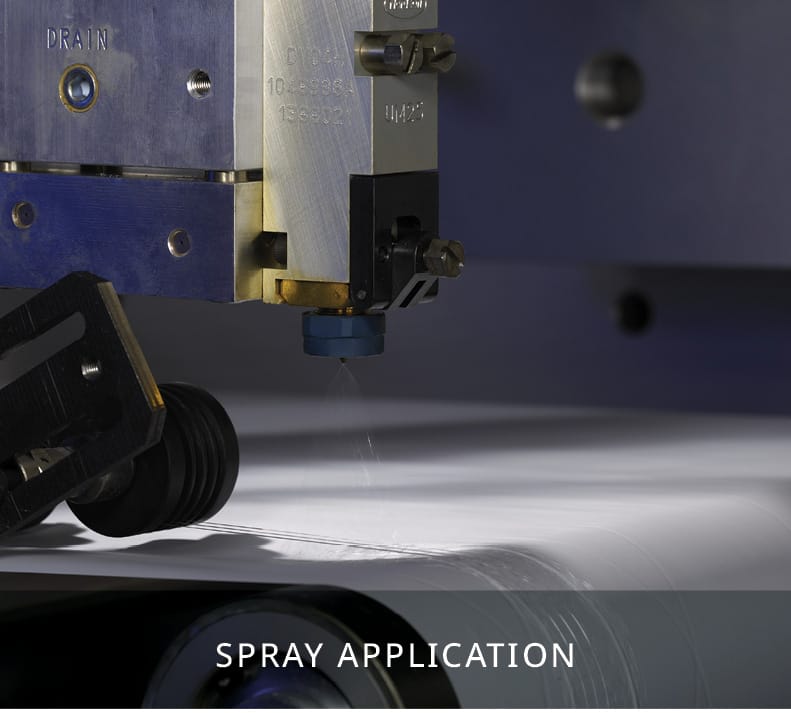6.9.2 Equipment Considerations
Water-based adhesives are versatile and can be applied in different ways:
- spray gun
- roller
- nozzles
- nozzle activated by a pressure system
- nozzle activated by an electronic system
- manual: brush, spatula, etc.




Section Seven Failure Model Analysis

As adhesives are selected for a particular application, one of the most important considerations is the adhesive joint’s environment (covered in detail in previous sections). Of course, the force acting on the joint must be capable of carrying the maximum load (without excessive creep), fatigue and cyclic stresses. Cyclic stresses, particularly slow ones, are much more damaging to an adhesive joint than steady stress. The adhesive selected for a particular application must be able to resist these loads and stresses not only initially, but also after exposure to the most severe environmental factors the adhesive joint will encounter during its lifetime. Heat and humidity are usually the most damaging environmental factors to be considered.
This section will help identify and troubleshoot the most common bonded joint challenges and failures. As discussed in Section 5, engineering a suitable assembly is not an easy task; it is important to remember that not all assemblies are created equally and that some will ultimately fail. What follows is a relatively comprehensive but generalised overview of the guidelines and steps needed for understanding possible causes of adhesive assembly failure.
Bonded assemblies are affected by how complete the contact is between the adhesive and the substrate (material), and the design should include appropriate surface preparation and the most suitable adhesive. This is the foundation of a successful bonding process. When the bonded assembly fails, we need to understand the failure mode.

